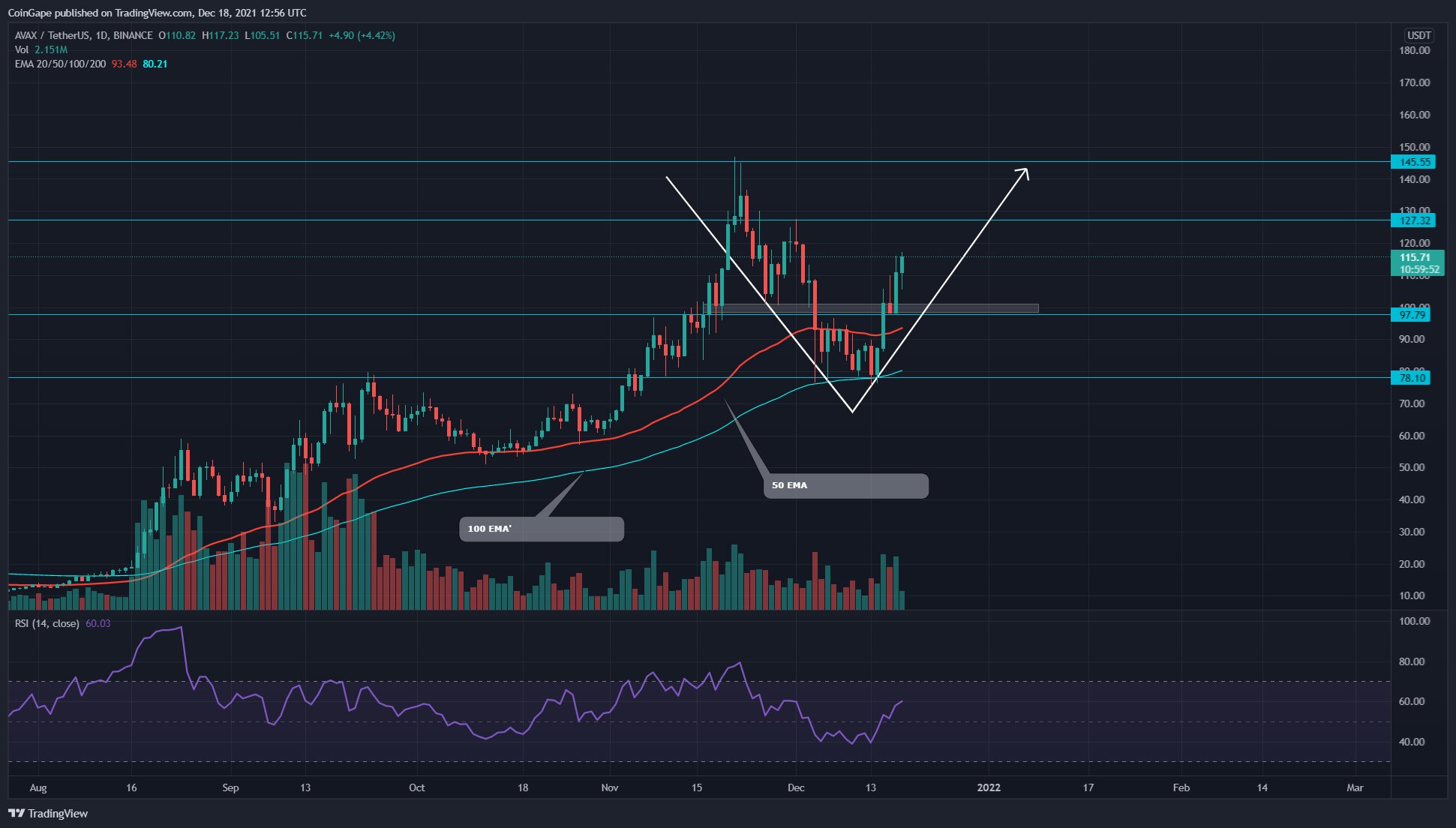Introduction
Welcome to the exciting world of cryptocurrency! Whether you’re new to the concept or have some experience, this guide will provide you with essential information on how to get started with cryptocurrency. Cryptocurrency has gained immense popularity in recent years, offering individuals an alternative form of digital currency that operates independently of traditional banking systems.
Cryptocurrencies, such as Bitcoin, Ethereum, and Litecoin, are decentralized digital assets that use cryptography for secure financial transactions and to control the creation of new units. What sets cryptocurrency apart from traditional money is its underlying technology, known as blockchain. Blockchain is a distributed ledger that records all transactions across a network of computers, eliminating the need for intermediaries such as banks. This technology ensures transparency, security, and immutability of the transaction history.
So, why should you consider investing in cryptocurrency? The potential for high returns is certainly one reason. Cryptocurrencies have experienced significant price volatility, leading to substantial gains for early investors. However, it’s important to note that investing in cryptocurrency also involves risks, and prices can fluctuate dramatically.
Another advantage of cryptocurrency is its accessibility. Anyone with an internet connection can participate in this digital economy, regardless of their location or financial status. Additionally, cryptocurrencies offer a level of anonymity and privacy, as transactions are pseudonymous and can be conducted without revealing personal information.
Getting started with cryptocurrency is relatively straightforward. In the following sections, we will guide you through the steps involved, from choosing a cryptocurrency exchange to making your first transaction. We will also provide tips for keeping your digital assets safe and secure, as well as insights into cryptocurrency taxes and successful investing strategies.
So, if you’re ready to dive into the world of cryptocurrency and potentially capitalize on this new financial frontier, let’s get started!
What is cryptocurrency?
Cryptocurrency is a form of digital or virtual currency that utilizes cryptography for secure financial transactions, control the creation of new units, and verify the transfer of assets. Unlike traditional currencies issued by governments and banks, cryptocurrencies operate independently of any central authority or institution. Instead, they rely on decentralized technology, known as blockchain, to provide a secure and transparent transaction network.
At its core, cryptocurrency is a medium of exchange that can be used for various purposes, including online purchases, investments, and remittances. The most well-known cryptocurrency is Bitcoin, which was invented by an anonymous person or group of people using the pseudonym Satoshi Nakamoto in 2009. Since then, thousands of alternative cryptocurrencies, commonly referred to as altcoins, have emerged, each with its unique features and use cases.
The value of cryptocurrencies is determined by supply and demand dynamics, similar to traditional markets. However, the volatility of cryptocurrency prices can be much higher due to the nascent nature of this digital asset class and market speculation. It’s important to note that the value of a particular cryptocurrency can fluctuate significantly within a short period.
Cryptocurrencies are built on blockchain technology, which is a distributed ledger that ensures the transparency and integrity of transactions. In a blockchain network, transactions are bundled into blocks and added to a chain in chronological order. This decentralized and transparent structure makes it difficult to manipulate or alter transaction records.
One of the primary advantages of cryptocurrencies is their potential to provide financial inclusion to individuals who don’t have access to traditional banking systems. Cryptocurrencies can be stored in digital wallets, which can be easily set up by anyone with an internet connection. This accessibility allows users to send and receive funds globally, overcoming geographical and bureaucratic limitations.
It’s important to understand that while cryptocurrencies offer many advantages, they also come with certain challenges and risks. The regulatory landscape surrounding cryptocurrencies varies from country to country, and there is still a level of uncertainty regarding their legal status. Additionally, the volatility of cryptocurrency prices means that investors should exercise caution and conduct thorough research before making any investment decisions.
In the next sections, we will delve deeper into the world of cryptocurrency, covering topics such as investing strategies, choosing a cryptocurrency exchange, and keeping your digital assets secure. So, let’s continue our journey into the fascinating realm of cryptocurrencies.
Why should you invest in cryptocurrency?
Investing in cryptocurrency has gained significant attention in recent years, and for good reason. While the cryptocurrency market can be highly volatile and speculative, there are several compelling reasons why individuals are considering it as an investment opportunity:
- Potential for high returns: Cryptocurrencies have shown the potential for substantial returns on investment. Bitcoin, for example, experienced a meteoric rise in value, making early investors significant profits. However, it’s important to note that past performance is not indicative of future results, and the cryptocurrency market can also experience sharp downturns.
- Diversification: Including cryptocurrencies in your investment portfolio can provide diversification benefits. Unlike traditional assets, such as stocks or bonds, cryptocurrencies are not directly correlated with the performance of the broader financial markets. This means that adding cryptocurrencies to your portfolio can potentially reduce overall risk.
- Decentralization and transparency: Cryptocurrencies operate on decentralized networks, such as blockchain, which allows for transparent and immutable transactions. This transparency reduces the risk of fraud and manipulation, offering a level of trust that traditional financial systems may lack.
- Global accessibility: Cryptocurrencies enable individuals to participate in a global financial system regardless of their location. With a computer or smartphone and an internet connection, you can easily buy, sell, and store cryptocurrencies. This accessibility eliminates barriers and opens up investment opportunities to a broader range of individuals.
- Emerging technology: Cryptocurrencies are still a relatively new technology, and investing in them allows you to be at the forefront of innovation. Blockchain technology, which underpins cryptocurrencies, has the potential to disrupt various industries, including finance, supply chain, and healthcare. Investing in cryptocurrencies gives you exposure to this technological revolution.
Despite the potential advantages, it’s crucial to approach cryptocurrency investments with caution. The market is highly volatile, and prices can fluctuate dramatically. It’s essential to conduct thorough research, understand the risks involved, and only invest what you can afford to lose.
In the following sections, we will explore how to get started with cryptocurrency, including choosing a cryptocurrency exchange, setting up a digital wallet, and making your first transaction. We will also provide tips for keeping your cryptocurrencies secure and offer insights into taxes and successful investing strategies. So, let’s continue our journey into the world of cryptocurrencies!
Understanding blockchain technology
Blockchain technology is the foundation that powers cryptocurrencies and provides the underlying framework for their security, transparency, and immutability. While the concept of blockchain may seem complex, it can be understood by breaking it down into its fundamental components.
At its core, a blockchain is a decentralized digital ledger that records and verifies transactions across multiple computers or nodes. Unlike traditional centralized systems, where a single entity or authority is responsible for maintaining the ledger, a blockchain operates on a distributed network, where every participant has a copy of the entire ledger.
Transactions on a blockchain are grouped together into blocks. Each block contains a list of verified transactions and a unique identifier called a hash, which is generated through a cryptographic process. The hash of each block also includes the hash of the previous block, creating a chain-like structure that links all the blocks together.
One key feature of blockchain technology is its transparency. Since every participant on the network has a copy of the ledger, it’s nearly impossible to alter or manipulate transaction records without the consensus of the majority. This transparency ensures the integrity of the blockchain and promotes trust among participants.
Another important aspect of blockchain is its security. Transactions on a blockchain are secured through cryptographic algorithms that ensure the authenticity and integrity of the data. Each transaction is digitally signed, making it virtually impossible for malicious actors to tamper with the information.
Additionally, blockchain technology provides immutability, meaning that once a transaction is recorded on the blockchain, it cannot be altered or deleted. This feature adds another layer of security and trust, making it suitable for applications where data integrity is crucial, such as financial transactions, supply chain management, and voting systems.
Blockchain technology is not limited to cryptocurrencies. It has the potential to revolutionize various industries by eliminating intermediaries, reducing transaction costs, and increasing efficiency. Industries like finance, healthcare, logistics, and energy are exploring the use of blockchain to streamline processes, enhance security, and enable new business models.
By understanding blockchain technology, you can grasp the underlying principles of cryptocurrencies and appreciate their potential impact on the future of the global economy. In the next sections, we will guide you through the practical aspects of getting started with cryptocurrency, including choosing a cryptocurrency exchange, setting up a digital wallet, and making your first transaction. So, let’s continue our exploration of this fascinating world!
Steps to get started with cryptocurrency
Getting started with cryptocurrency may seem like a daunting task, but with the right guidance, it can be a straightforward process. Here are the essential steps to help you begin your journey into the world of cryptocurrency:
- Educate Yourself: Before diving into cryptocurrency, take the time to educate yourself about the fundamentals. Understand the key concepts, such as blockchain, wallets, and exchanges. Consider reading books, watching online tutorials, or joining communities and forums to gain insights from experienced individuals.
- Choose a Cryptocurrency Exchange: A cryptocurrency exchange is a platform where you can buy, sell, and trade cryptocurrencies. Research different exchanges and consider factors such as security, fees, user interface, and supported cryptocurrencies. Popular exchanges include Coinbase, Binance, and Kraken.
- Create an Account: Once you’ve chosen an exchange, create an account by providing the required information. This typically includes your name, email address, and sometimes identity verification documents, depending on the exchange’s regulations.
- Secure Your Account: Enable two-factor authentication (2FA) to add an extra layer of security to your account. This may involve linking your account to an authentication app, such as Google Authenticator, or receiving one-time codes via SMS.
- Create a Digital Wallet: A digital wallet is a secure place to store your cryptocurrencies. You can choose between software wallets, which can be installed on your computer or smartphone, or hardware wallets, which are physical devices that store your private keys offline. Popular wallet options include MetaMask, Trust Wallet, and Ledger.
- Connect Your Wallet to the Exchange: To transfer funds between your wallet and the exchange, you’ll need to link your wallet address to your exchange account. This step may vary depending on the wallet and exchange you choose, so follow the specific instructions provided by the respective platforms.
- Fund Your Wallet: Once your wallet is linked to the exchange, you can transfer funds from your bank account or use other accepted payment methods to purchase cryptocurrencies. Follow the instructions on the exchange to initiate the transfer.
- Make Your First Transaction: With funds in your wallet, you’re ready to make your first cryptocurrency transaction. You can buy, sell, or trade cryptocurrencies on the exchange’s platform. Pay attention to transaction fees and market fluctuations as you navigate the process.
- Stay Informed: Cryptocurrency markets can be volatile, so it’s essential to stay informed about industry news, market trends, and regulatory changes. Follow reputable sources, join online communities, and consider setting up price alerts to stay up-to-date with the latest developments.
Remember that cryptocurrency investing involves risk, and it’s important to only invest what you can afford to lose. As you gain more experience and knowledge, you can explore advanced trading strategies and delve into the diverse world of altcoins.
In the following sections, we will provide more insights into keeping your cryptocurrency safe and secure, understanding cryptocurrency taxes, and tips for successful investing strategies. So, let’s continue our journey through the exciting realm of cryptocurrencies!
Choosing a cryptocurrency exchange
Choosing the right cryptocurrency exchange is a crucial step in your journey into the world of cryptocurrencies. The exchange you select will determine the ease of buying, selling, and trading cryptocurrencies, as well as the security of your funds. Here are some factors to consider when choosing a cryptocurrency exchange:
- Security: Security should be a top priority when selecting an exchange. Look for exchanges that implement robust security measures, such as two-factor authentication (2FA), encryption, and cold storage for customer funds. Research the exchange’s reputation and check if it has experienced any past security breaches.
- User Interface: Consider the exchange’s user interface and ease of use. Look for a platform that provides a smooth and intuitive trading experience. The exchange’s website or mobile app should be user-friendly, allowing you to navigate through different trading pairs, place orders, and track your portfolio effortlessly.
- Currency Selection: Assess the range of cryptocurrencies available on the exchange. While major cryptocurrencies like Bitcoin and Ethereum are usually supported by most exchanges, if you have specific altcoins in mind, ensure that they are listed on the exchange you choose.
- Liquidity: Liquidity refers to the ease of buying or selling a cryptocurrency without significant price fluctuations. Exchanges with high liquidity provide better trading opportunities and tighter spreads. Look for exchanges that have high trading volumes and a wide range of active users.
- Trading Fees: Exchanges charge fees for transactions, including deposits, withdrawals, and trading. Compare the fee structures of different exchanges and consider the impact they can have on your trading activities. Some exchanges offer discounted fees for high-volume traders or loyalty programs for regular users.
- Supported Countries: Ensure that the exchange you choose is available in your country or region. Some exchanges have restricted services in specific geographical locations due to regulatory requirements. Check the exchange’s website or contact their customer support to confirm their availability in your area.
- Customer Support: Assess the quality of customer support offered by the exchange. Look for exchanges with responsive and knowledgeable support teams who can assist you with any issues or queries. Prompt and reliable customer support can make a significant difference in the event of any unexpected situations.
- Reputation and Reviews: Before finalizing your decision, research the exchange’s reputation and read reviews from other users. Take note of any negative feedback or unresolved customer complaints. Forums and social media platforms can provide valuable insights into the experiences of other cryptocurrency traders.
By considering these factors, you can narrow down your options and select the cryptocurrency exchange that aligns with your specific requirements. Remember to perform due diligence and conduct thorough research before trusting an exchange with your funds.
Once you’ve chosen an exchange, you can proceed with creating an account, securing your account through two-factor authentication, and linking your digital wallet for seamless transactions. In the following sections, we will guide you through the process of setting up a digital wallet, funding it, and making your first cryptocurrency transaction. So, let’s move forward on our cryptocurrency journey!
Creating a digital wallet
A digital wallet is an essential tool for securely storing and managing your cryptocurrencies. It serves as a virtual “wallet” that allows you to send, receive, and store your digital assets. Here’s what you need to know about creating a digital wallet:
- Choose a Wallet Type: There are different types of digital wallets to choose from, each with its unique features and levels of security. The main types include software wallets, hardware wallets, and web-based wallets. Consider your needs, technical expertise, and security preferences when selecting the right wallet for you.
- Software Wallets: Software wallets are applications or programs that you can install on your desktop or mobile device. They offer convenience and accessibility, allowing you to manage your cryptocurrencies through an intuitive user interface. Examples of popular software wallets include MetaMask, Trust Wallet, and Exodus.
- Hardware Wallets: Hardware wallets are physical devices designed specifically to store cryptocurrencies offline. They offer the highest level of security by keeping your private keys offline, away from potential cyber threats. Popular hardware wallet brands include Ledger, Trezor, and KeepKey.
- Web-based Wallets: Web-based wallets, also known as online wallets, are accessible through a web browser. They are usually managed by a third-party service provider, which means you don’t have full control over your private keys. While web wallets offer convenience, they may be more susceptible to hacking and security breaches.
- Wallet Security: Regardless of the wallet type you choose, prioritize the security of your digital wallet. Set up strong, unique passwords and consider enabling additional security measures such as two-factor authentication (2FA). Keep your wallet software and devices up to date with the latest security patches and regularly backup your wallet.
- Wallet Addresses: Each digital wallet has a unique address, which is a combination of numbers and letters. This address acts as your identifier when sending and receiving cryptocurrencies. When receiving funds, you provide your wallet address to the sender. It’s important to double-check the wallet address before making any transactions to ensure accuracy.
- Backup Your Wallet: Regardless of the wallet type, it’s crucial to regularly backup your wallet. This typically involves backing up a file or a recovery phrase (seed phrase) that can be used to restore your wallet in case of loss, theft, or device failure. Follow the specific instructions provided by your wallet provider to securely backup your wallet.
- Test the Wallet: Before storing a significant amount of cryptocurrencies in your wallet, consider making a small test transaction. This allows you to ensure that the wallet is functioning correctly and that you can successfully send and receive funds.
Remember that the security of your digital wallet is of utmost importance. Treat your wallet like you would a physical wallet containing cash and take the necessary precautions to protect your cryptocurrencies.
With your digital wallet set up, you’re ready to move forward in your cryptocurrency journey. In the next sections, we will guide you through funding your wallet, making your first cryptocurrency transaction, and provide insights on how to keep your digital assets safe and secure. So, let’s continue exploring the exciting realm of cryptocurrencies!
Fund your wallet
Once you’ve created your digital wallet, the next step is to fund it with cryptocurrencies. Whether you’ve purchased cryptocurrencies from an exchange or received them from another wallet, here’s what you need to know about funding your wallet:
- Choose a Funding Method: Depending on your exchange and wallet, there are various methods you can use to fund your wallet. The most common options include bank transfers, credit or debit card purchases, and peer-to-peer transfers.
- Connecting your Bank Account: If your wallet and exchange allow bank transfers, you can link your bank account to the exchange and initiate a transfer. This process may involve verifying your bank account details, such as providing your account number and routing number.
- Credit or Debit Card Purchases: Some wallets and exchanges allow you to purchase cryptocurrencies directly using your credit or debit card. This method provides convenience and allows for instant funding of your wallet, but it may involve additional fees.
- Peer-to-Peer Transfers: If you already have cryptocurrencies in another wallet, you can perform a peer-to-peer transfer to fund your new wallet. This involves sending cryptocurrencies from your existing wallet to the wallet address of your new wallet.
- Verify Transaction Details: Before initiating any transactions, carefully review the transaction details to ensure accuracy. Double-check the wallet addresses and the amount of cryptocurrency you’re sending. Crypto transactions cannot be reversed, so it’s crucial to be cautious and avoid any mistakes.
- Transaction Confirmation: Depending on the cryptocurrency you’re funding your wallet with, the transaction confirmation may take some time. Each cryptocurrency has its own confirmation process, which involves network validations. Be patient and wait for the required number of confirmations before considering the transaction as complete.
- Stay Informed: Keep an eye on your wallet balance and stay informed about any transaction activity. Most cryptocurrency wallets provide transaction history, which allows you to track your incoming and outgoing transactions. Regularly monitoring your wallet will help you stay on top of your funds.
It’s important to note that funding your wallet exposes your cryptocurrencies to potential risks. Make sure your wallet and exchange are secure, and take precautions to protect your wallet’s private keys. Regularly update your wallet software, use strong passwords, and enable additional security features like two-factor authentication (2FA).
With your wallet funded, you’re ready to make your first cryptocurrency transactions. In the next section, we will guide you through the process of making your first transaction. We will cover the basics of sending and receiving cryptocurrencies and provide tips to ensure a smooth transaction experience. So, let’s continue our journey into the world of cryptocurrencies!
Making your first cryptocurrency transaction
Now that you have your digital wallet funded with cryptocurrencies, you’re ready to make your first transaction. Whether you’re sending or receiving cryptocurrencies, here are the essential steps to guide you through the process:
- Sending Cryptocurrencies: If you want to send cryptocurrencies from your wallet to another wallet address, follow these steps:
- Open your digital wallet and navigate to the “Send” or “Send/Receive” section.
- Enter the recipient’s wallet address. Double-check the address to ensure accuracy.
- Specify the amount of cryptocurrency you wish to send. Some wallets allow you to choose between different denominations, such as Bitcoin (BTC) or Ether (ETH).
- Review the transaction details, including the fee and estimated delivery time.
- If everything looks correct, confirm the transaction. Depending on the wallet, you may need to enter your wallet password or provide additional verification, such as a transaction confirmation code.
- Wait for the transaction to be confirmed on the blockchain network. The time it takes to confirm a transaction varies depending on the cryptocurrency and network congestion.
- Receiving Cryptocurrencies: If you want to receive cryptocurrencies into your wallet from another wallet address, follow these steps:
- Obtain your wallet address from your digital wallet. It may be listed under the “Receive” or “Receive/Deposit” section.
- Share your wallet address with the sender. They will need to enter this address to initiate the transaction.
- Double-check the wallet address before sending it to ensure accuracy. Wallet addresses are typically a long string of alphanumeric characters.
- Wait for the sender to initiate the transaction and confirm that the funds have been sent to your wallet address.
- Once the transaction is confirmed on the blockchain network, the funds will appear in your wallet balance.
- Transaction Fees: Keep in mind that cryptocurrency transactions usually involve fees. The fees vary depending on the network congestion and the cryptocurrency you’re transacting with. Higher fees often result in faster transaction confirmation. Check your wallet or the cryptocurrency exchange for information on applicable fees and fee options.
- Stay Vigilant: Be cautious when performing cryptocurrency transactions. Always double-check wallet addresses before sending or receiving funds to avoid any mistakes or potential losses. Additionally, stay vigilant against phishing attempts or fraudulent activities. Ensure you are interacting with legitimate wallets or exchanges by verifying website URLs and never sharing sensitive information.
Congratulations! You’ve successfully made your first cryptocurrency transaction. It’s important to familiarize yourself with the transaction process and pay attention to transaction details to ensure smooth and secure transactions.
In the next sections, we will explore strategies for keeping your cryptocurrencies safe and secure, discuss the concept of cryptocurrency taxes, and provide tips for successful investing strategies. So, let’s continue our cryptocurrency journey and expand our knowledge even further!
Keeping your cryptocurrency safe and secure
As you dive deeper into the world of cryptocurrencies, it’s crucial to prioritize the security of your digital assets. Cryptocurrency transactions are irreversible, and the decentralized nature of cryptocurrencies means that you are solely responsible for the safety of your funds. Here are some essential tips to help you keep your cryptocurrency safe and secure:
- Choose a reputable wallet: Select a trusted and secure digital wallet to store your cryptocurrencies. Research different wallet options and consider factors such as security features, user reviews, and developer reputation. Use wallets recommended by cryptocurrency communities or exchanges to ensure reliability.
- Implement strong security measures: Strengthen the security of your wallet by setting a strong and unique password. Enable two-factor authentication (2FA) for an extra layer of protection. Regularly update your wallet software to benefit from the latest security patches and features.
- Backup your wallet: Regularly backup your wallet to safeguard against data loss or device failure. Most wallets offer options for creating backups, such as mnemonic phrases or seed phrases. Keep these backups in a secure location, preferably offline or in an encrypted format.
- Use cold storage wallets: Consider using hardware wallets, also known as cold storage wallets, to store large amounts of cryptocurrencies. Hardware wallets store your private keys offline, protecting them from online threats. Ledger, Trezor, and KeepKey are popular hardware wallet options.
- Be cautious of phishing attempts: Be vigilant of phishing attempts, where malicious actors try to steal your private keys or wallet information. Double-check website URLs before entering login credentials. Avoid clicking on suspicious links or downloading files from untrusted sources.
- Keep your software and devices secure: Protect your computer and mobile devices by using up-to-date antivirus software, firewall protection, and secure operating systems. Avoid using public Wi-Fi networks when accessing your wallet or making transactions, as they pose security risks.
- Keep private keys offline: Store your private keys offline in a secure location, separate from your digital devices. Consider using a physical or encrypted USB drive, paper wallets, or other secure offline storage options to protect your private keys from online threats.
- Be mindful of public discussions: Avoid sharing sensitive wallet information or discussing the size of your cryptocurrency holdings in public forums or social media. This can make you a target for cybercriminals or potential scams.
- Research before investing: Conduct thorough research before investing in a new cryptocurrency or participating in initial coin offerings (ICOs). Be wary of investment schemes promising guaranteed returns or quick profits. Verify the legitimacy of projects and only invest in reputable cryptocurrencies.
- Keep your wallet software up-to-date: Regularly update your wallet software to ensure you have the latest security enhancements and bug fixes. Wallet developers often release updates to address vulnerabilities and strengthen the security of their applications.
By implementing these security measures, you can significantly reduce the risk of losing your cryptocurrency holdings to theft or hacking. Remember, the security of your digital assets ultimately rests in your hands, so stay informed and proactive in safeguarding your wallet and private keys.
In the next sections, we will discuss cryptocurrency taxes, providing insights into understanding and managing your tax obligations. Additionally, we will share tips and strategies for successful cryptocurrency investing. So, let’s continue our journey into the exciting realm of cryptocurrencies!
Understanding cryptocurrency taxes
As cryptocurrencies continue to gain mainstream adoption, governments around the world are developing guidelines and regulations for their taxation. It’s important to understand the tax implications associated with cryptocurrencies to ensure compliance with your local tax authorities. Here are key points to consider when it comes to cryptocurrency taxes:
- Cryptocurrency Classification: Tax laws regarding cryptocurrencies can vary from country to country. It’s important to determine how cryptocurrencies are classified for tax purposes in your jurisdiction. In some cases, cryptocurrencies may be treated as a form of property, while in others, they may be considered as currency or an investment asset.
- Cryptocurrency Transactions: Tax obligations arise when certain cryptocurrency transactions occur. This can include buying or selling cryptocurrencies, trading one cryptocurrency for another, or using cryptocurrencies to make purchases or receive income. Each transaction may trigger a taxable event, and it’s important to maintain records of these transactions for tax purposes.
- Capital Gains Taxes: Profits or gains made from the sale or exchange of cryptocurrencies are generally subject to capital gains taxes. The specific tax rate and rules for calculating capital gains tax will depend on your country’s tax regulations. Generally, the capital gain is determined by the difference between the sale price and the cost basis of the cryptocurrency.
- Reporting Requirements: Most tax authorities require individuals to report their cryptocurrency activities on their tax returns. This includes reporting the value of cryptocurrency holdings and any capital gains or losses incurred during the tax year. Failure to report cryptocurrency transactions may result in penalties or legal consequences.
- Record Keeping: It’s important to keep detailed records of all your cryptocurrency transactions, including dates, amounts, and values in your local currency. Retaining accurate records will simplify the process of calculating your taxable gains or losses and provide evidence in case of an audit by tax authorities.
- Seek Professional Advice: Due to the complexities surrounding cryptocurrency taxes, it’s advisable to seek guidance from a tax professional or accountant with experience in cryptocurrencies. They can help ensure you understand your tax obligations and assist you in preparing accurate tax filings.
- International Tax Considerations: If you engage in cryptocurrency transactions across international borders, be aware of the potential tax implications in both your home country and the country where the transactions take place. Double taxation agreements, if applicable, may help mitigate tax liabilities.
Understanding and complying with cryptocurrency tax regulations is essential for maintaining good financial standing and avoiding potential legal issues. Always consult with a tax professional who is familiar with the tax laws in your jurisdiction to ensure proper adherence to the regulations.
In the next sections, we will discuss tips and strategies for successful cryptocurrency investing, including diversifying your cryptocurrency portfolio and staying up-to-date with industry news and trends. So, let’s continue our exploration of the exciting world of cryptocurrencies!
Tips and strategies for successful cryptocurrency investing
Investing in cryptocurrencies can be both exciting and challenging. The cryptocurrency market can be highly volatile, and proper planning and strategy are crucial for success. Here are some tips and strategies to consider when it comes to cryptocurrency investing:
- Do Your Research: Before investing in any cryptocurrency, conduct thorough research. Understand the technology, use case, team, and potential future developments of the cryptocurrency you’re interested in. Stay updated with industry news and follow reputable sources to make informed investment decisions.
- Invest What You Can Afford to Lose: Cryptocurrency investments come with risks. Only invest an amount you’re comfortable with and can afford to lose. Avoid investing funds that are necessary for your day-to-day living expenses or long-term financial goals.
- Diversify Your Portfolio: Diversification is key to managing risk in any investment. Consider spreading your investments across different cryptocurrencies, industries, and geographical regions. This diversification can help reduce the impact of volatility on your overall portfolio.
- Set Clear Goals and Strategies: Before investing, define your investment goals and strategies. Determine whether you’re investing for the short term or long term. Establish clear entry and exit points and regularly assess your investments against your goals.
- Manage Your Emotions: Cryptocurrency markets can be highly volatile, leading to emotional decision-making. Avoid making impulsive investment choices based on fear or excitement. Maintain a calm and rational mindset and base your decisions on sound analysis and research.
- Take Profit and Cut Losses: It’s important to set profit targets and have a plan for exiting an investment when it reaches your desired return. Similarly, determine a threshold at which you will cut your losses to minimize potential losses. Having predefined exit strategies helps manage risk and control emotions.
- Use Dollar Cost Averaging: Dollar-cost averaging (DCA) involves investing a fixed amount in cryptocurrencies at regular intervals, regardless of market conditions. This strategy can help mitigate the impact of market volatility and potentially provide better average purchase prices over time.
- Stay Informed: Keep yourself updated with the latest news, trends, and developments in the cryptocurrency market. Stay connected with reputable cryptocurrency communities, industry experts, and follow reliable sources of information to make informed investment decisions.
- Consider Professional Advice: If you’re new to cryptocurrency investing or find it challenging to navigate the market, consider seeking advice from a financial advisor or cryptocurrency expert. Their expertise can provide valuable insights and guidance tailored to your specific investment goals and risk tolerance.
- Practice Patience and Long-Term Thinking: Successful investing in cryptocurrencies often requires patience and a long-term perspective. The market can experience significant short-term fluctuations, but focusing on the long-term potential of cryptocurrencies can help weather the ups and downs.
Remember, the cryptocurrency market can be unpredictable, and there are no guarantees of returns. Always assess your risk tolerance, conduct thorough research, and make well-informed investment decisions that align with your financial goals.
Incorporate these tips and strategies into your cryptocurrency investing journey to increase the chances of achieving success. In the next sections, we will delve into topics such as diversifying your cryptocurrency portfolio and staying up-to-date with cryptocurrency news and trends. So, let’s continue exploring the fascinating world of cryptocurrencies!
Diversifying your cryptocurrency portfolio
Diversification plays a crucial role in managing risk and maximizing potential returns in any investment portfolio, including cryptocurrencies. Diversifying your cryptocurrency portfolio involves spreading your investments across different cryptocurrencies, asset classes, and strategies. Here are some key reasons why diversification is important and how to effectively diversify your cryptocurrency holdings:
Reduce Risk: Diversification helps mitigate the risk associated with investing in a single cryptocurrency. The cryptocurrency market is known for its volatility, and investments in individual coins can be susceptible to significant price fluctuations. By diversifying your portfolio, you can distribute risk across multiple cryptocurrencies, potentially reducing the impact of any negative performance in a single coin on your overall portfolio.
Exposure to Different Opportunities: Different cryptocurrencies have varied growth potential and market cycles. By diversifying, you gain exposure to different opportunities and increase the likelihood of benefiting from the success of various cryptocurrencies. Some coins may outperform others, and diversification allows you to capture those potential gains.
Increased Flexibility: Diversification provides flexibility in adjusting your portfolio based on market conditions and your investment goals. You can allocate investments based on your risk tolerance, investment time horizon, and market outlook. It enables you to adapt to evolving market dynamics and make strategic decisions based on the performance of different cryptocurrencies.
How to Diversify your Cryptocurrency Portfolio:
- Invest in Different Cryptocurrencies: Explore and invest in a mix of cryptocurrencies with different characteristics, use cases, and market capitalizations. Consider well-established cryptocurrencies like Bitcoin and Ethereum, as well as promising altcoins with unique value propositions.
- Allocate Across Asset Classes: Consider diversifying beyond cryptocurrencies themselves. Explore opportunities to invest in blockchain-related stocks, exchange-traded funds (ETFs), or companies involved in cryptocurrency infrastructure and services. This provides exposure to different parts of the ecosystem and diversifies your risk beyond pure cryptocurrency investments.
- Consider Geographical Diversification: Cryptocurrency markets vary across different regions. Consider diversifying geographically by investing in cryptocurrencies from different countries or regions. Different regulatory environments, adoption rates, and market dynamics can impact the performance of cryptocurrencies in specific regions.
- Timing and Dollar-Cost Averaging: Diversify your investments over time to mitigate the risk of investing a significant portion of your capital all at once. Dollar-cost averaging (DCA) is an effective strategy where you invest a fixed amount at regular intervals, regardless of market conditions. This approach helps spread the investment over time and reduce the impact of market volatility.
- Monitor and Rebalance: Regularly review your portfolio and rebalance if necessary. As the cryptocurrency market evolves, the performance of different assets in your portfolio may change. Rebalancing helps realign your investments with your desired asset allocation and investment objectives.
- Seek Professional Advice: If you’re unsure about diversifying your cryptocurrency portfolio or need guidance, consider consulting a financial advisor or crypto professional. They can provide insights tailored to your investment goals and help construct a well-diversified portfolio in line with your risk tolerance.
Remember, diversification does not guarantee profits or protect against losses, but it can help manage risk and increase your exposure to different opportunities in the cryptocurrency market. Regularly assess your portfolio, adapt to changing market conditions, and make informed decisions to optimize the potential long-term returns of your cryptocurrency investments.
In the next sections, we will explore the importance of staying up-to-date with cryptocurrency news and trends and provide additional insights into successful cryptocurrency investing strategies. So, let’s continue our journey into the dynamic world of cryptocurrencies!
Staying up-to-date with cryptocurrency news and trends
Staying informed about the latest cryptocurrency news and trends is vital for successful investing in the dynamic and rapidly evolving cryptocurrency market. By staying up-to-date, you can make informed investment decisions, identify potential opportunities, and navigate market volatility effectively. Here’s why it’s important to stay informed and how to stay up-to-date with cryptocurrency news and trends:
Understanding Market Developments: The cryptocurrency market is influenced by various factors, including regulatory changes, technological advancements, market sentiment, and global events. Staying informed about market developments allows you to understand the evolving landscape and make informed decisions based on current market conditions.
Identifying Investment Opportunities: Cryptocurrency news and trends can highlight emerging projects, partnerships, or technological advancements that may present investment opportunities. By keeping track of these developments, you may discover potential investments before they become widely known, giving you an advantage in identifying untapped gems.
Managing Risk: Staying informed about market news and trends helps you identify and assess potential risks associated with your investments. Breaking news, security breaches, or regulatory announcements can impact the value and stability of cryptocurrencies. Being aware of these risks allows you to make informed decisions and take appropriate actions to minimize potential losses.
How to stay up-to-date with cryptocurrency news and trends:
- Follow Reputable News Sources: Identify reliable and reputable cryptocurrency news platforms and subscribe to their newsletters or RSS feeds. Some popular cryptocurrency news websites include CoinDesk, Cointelegraph, and Bitcoin Magazine. These sources provide updates on market trends, regulatory updates, and relevant industry news.
- Join Cryptocurrency Communities: Participate in online forums, social media communities, and dedicated cryptocurrency channels to engage with experienced traders and enthusiasts. Platforms like Reddit, Twitter, and Telegram host a wide range of cryptocurrency communities. Interacting with like-minded individuals can provide valuable insights, market discussions, and news alerts.
- Follow Influential Figures: Follow influential figures in the cryptocurrency industry, including industry leaders, investors, and analysts. Their analyses, opinions, and market insights can provide valuable perspectives on market trends and potential investment opportunities. Twitter and LinkedIn are popular platforms to connect with and follow these figures.
- Attend Industry Events and Conferences: Participate in industry events, conferences, and webinars to gain knowledge directly from experts and thought leaders. These events often cover various aspects of the cryptocurrency ecosystem, such as technology advancements, investment strategies, and regulatory updates.
- Set Up Price Alerts: Utilize cryptocurrency price alert tools or apps to receive notifications when prices hit certain thresholds or when significant market movements occur. This allows you to stay updated on price fluctuations and make timely investment decisions.
- Utilize Aggregator Platforms: Use cryptocurrency news aggregator platforms that compile news articles, blog posts, and other content from various sources. These platforms provide a consolidated view of the latest news and trends in the cryptocurrency industry.
Staying up-to-date with cryptocurrency news and trends requires ongoing effort and vigilance. It’s important to critically evaluate information and consider multiple sources to form a well-rounded understanding of the market. By staying informed, you can navigate the cryptocurrency market with confidence and make informed investment decisions.
In the next sections, we will explore additional insights and strategies for successful cryptocurrency investing and managing your cryptocurrency portfolio effectively. So, let’s continue our journey into the exciting world of cryptocurrencies!
Conclusion
Congratulations on reaching the end of this guide on how to get started with cryptocurrency! We’ve covered a range of essential topics to help you navigate the exciting world of cryptocurrencies with confidence.
From understanding what cryptocurrency is and why it’s worth considering as an investment, to exploring blockchain technology and the steps involved in getting started, you now have a solid foundation to embark on your cryptocurrency journey.
We discussed the importance of choosing a reputable cryptocurrency exchange and creating a secure digital wallet to safeguard your funds. We also explored the process of funding your wallet, making your first cryptocurrency transaction, and keeping your investments safe and secure.
Furthermore, we highlighted the significance of understanding cryptocurrency taxation, diversifying your portfolio, and staying up-to-date with the latest news and trends. By implementing diverse strategies, you can minimize risk, identify investment opportunities, and make informed decisions.
Remember, the cryptocurrency market is highly volatile, and investing in cryptocurrencies carries risks. It’s important to conduct thorough research, monitor your investments, and stay informed. Consider seeking professional advice when needed and never invest more than you can afford to lose.
With the knowledge gained from this guide, continue exploring and expanding your understanding of cryptocurrencies. Adapt to the ever-evolving market, refine your investment strategies, and develop your own perspective on the future of digital assets.
Keep learning, stay curious, and remain open to new developments and opportunities in the cryptocurrency space. Your journey into the world of cryptocurrencies has just begun, and the possibilities are limitless.
Good luck on your cryptocurrency investment journey, and may it be filled with growth, success, and exciting discoveries!

























